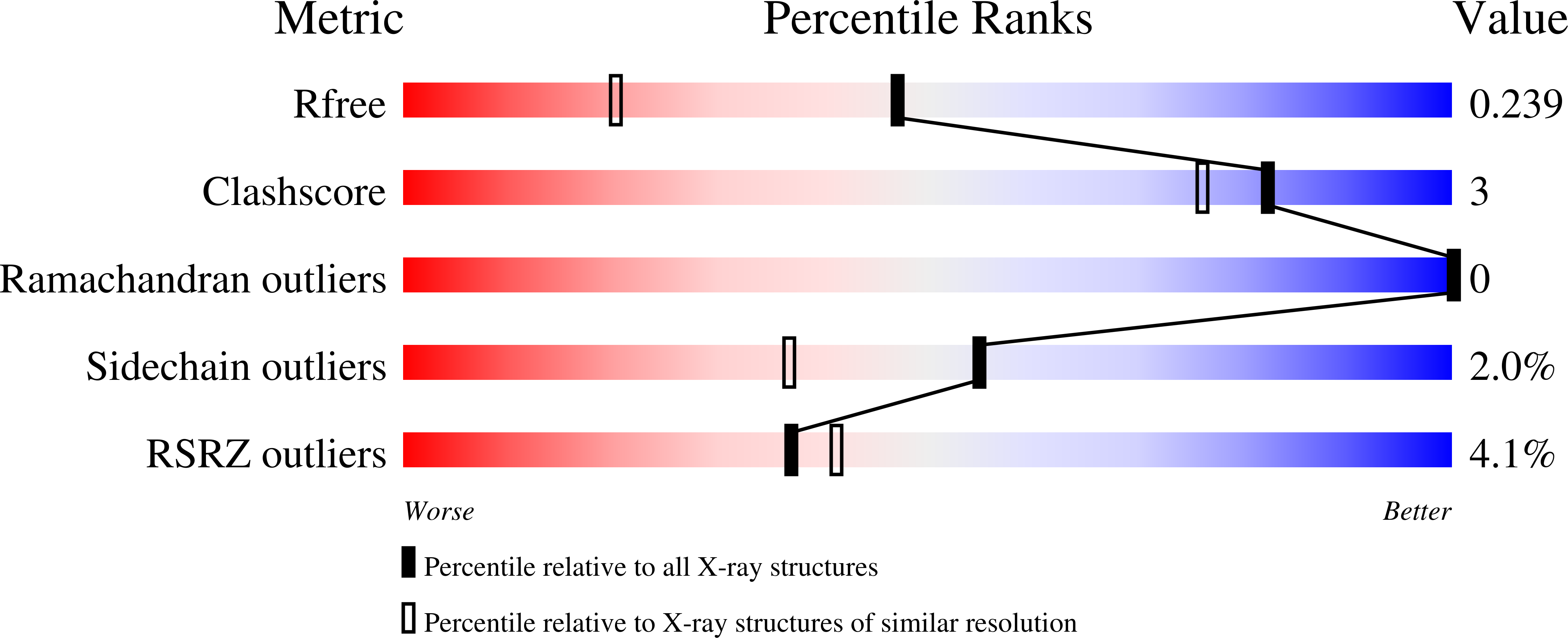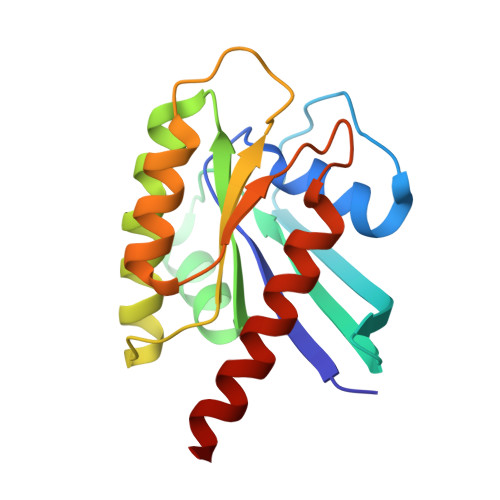Structure-based development of new RAS-effector inhibitors from a combination of active and inactive RAS-binding compounds.
Cruz-Migoni, A., Canning, P., Quevedo, C.E., Bataille, C.J.R., Bery, N., Miller, A., Russell, A.J., Phillips, S.E.V., Carr, S.B., Rabbitts, T.H.(2019) Proc Natl Acad Sci U S A 116: 2545-2550
- PubMed: 30683716
- DOI: https://doi.org/10.1073/pnas.1811360116
- Primary Citation of Related Structures:
6GOD, 6GOE, 6GOF, 6GOG, 6GOM, 6GQT, 6GQW, 6GQX, 6GQY - PubMed Abstract:
The RAS gene family is frequently mutated in human cancers, and the quest for compounds that bind to mutant RAS remains a major goal, as it also does for inhibitors of protein-protein interactions. We have refined crystallization conditions for KRAS 169 Q61H -yielding crystals suitable for soaking with compounds and exploited this to assess new RAS-binding compounds selected by screening a protein-protein interaction-focused compound library using surface plasmon resonance. Two compounds, referred to as PPIN-1 and PPIN-2, with related structures from 30 initial RAS binders showed binding to a pocket where compounds had been previously developed, including RAS effector protein-protein interaction inhibitors selected using an intracellular antibody fragment (called Abd compounds). Unlike the Abd series of RAS binders, PPIN-1 and PPIN-2 compounds were not competed by the inhibitory anti-RAS intracellular antibody fragment and did not show any RAS-effector inhibition properties. By fusing the common, anchoring part from the two new compounds with the inhibitory substituents of the Abd series, we have created a set of compounds that inhibit RAS-effector interactions with increased potency. These fused compounds add to the growing catalog of RAS protein-protein inhibitors and show that building a chemical series by crossing over two chemical series is a strategy to create RAS-binding small molecules.
Organizational Affiliation:
Weatherall Institute of Molecular Medicine, MRC Molecular Haematology Unit, John Radcliffe Hospital, University of Oxford, OX3 9DS Oxford, United Kingdom.

















